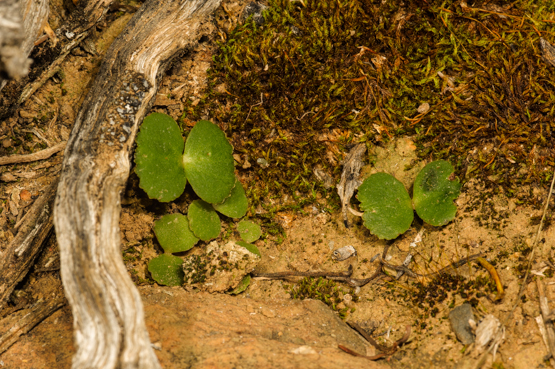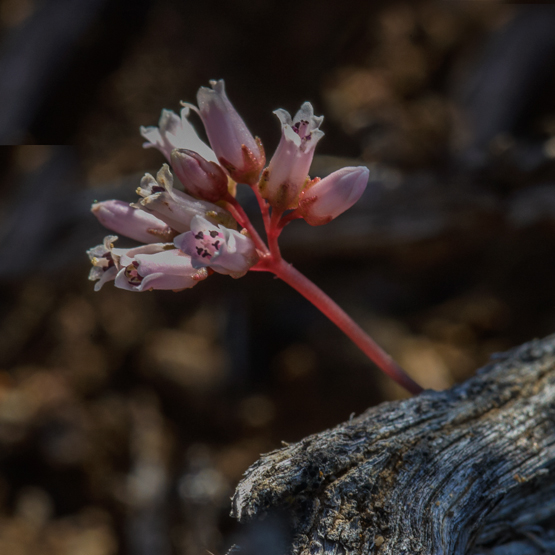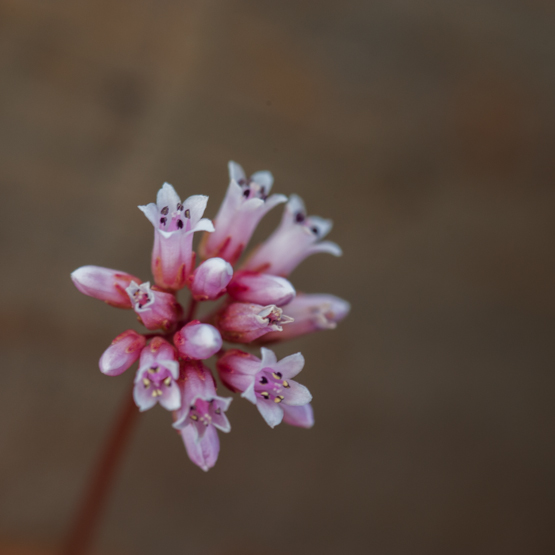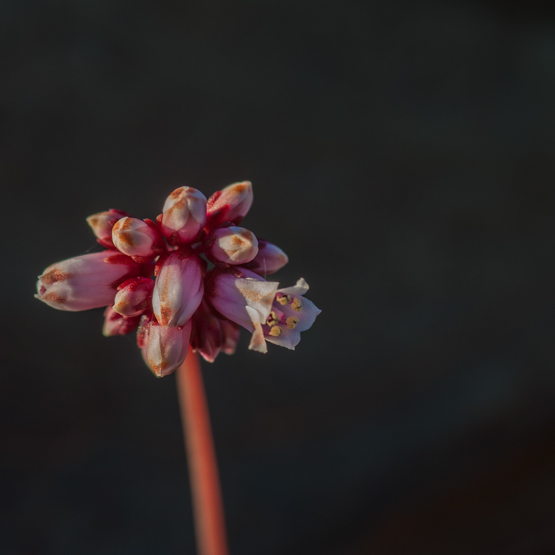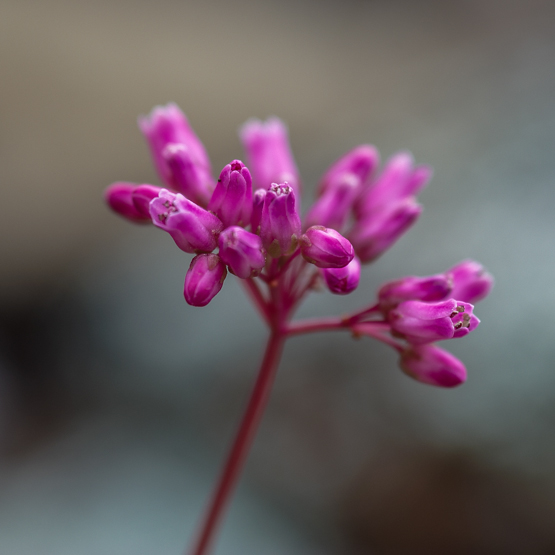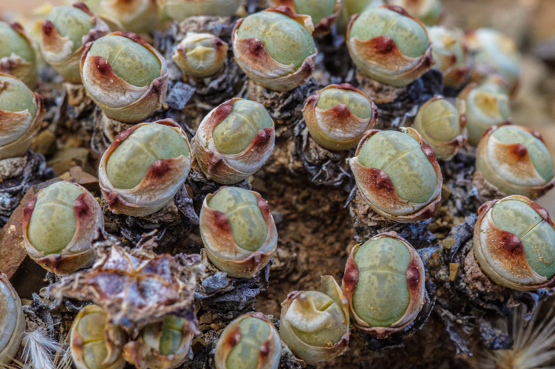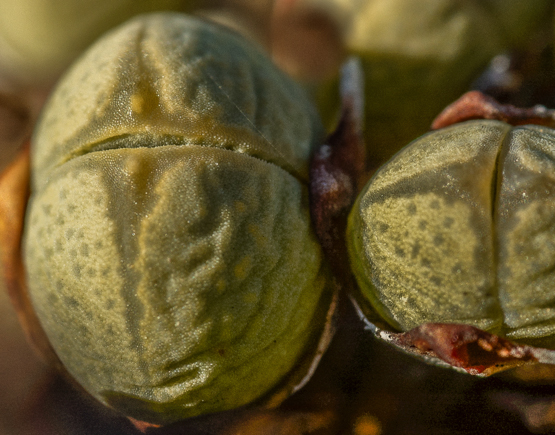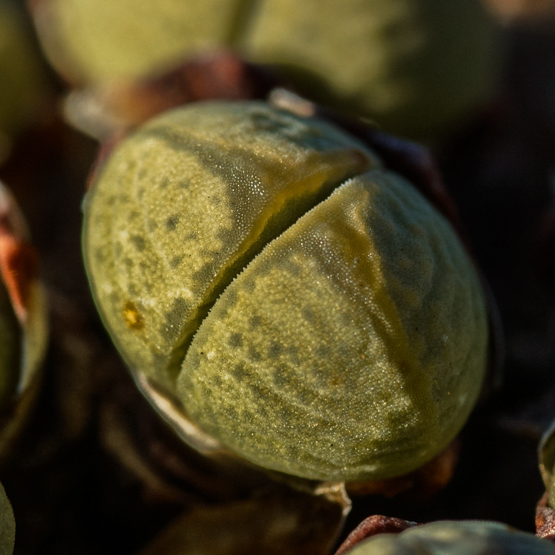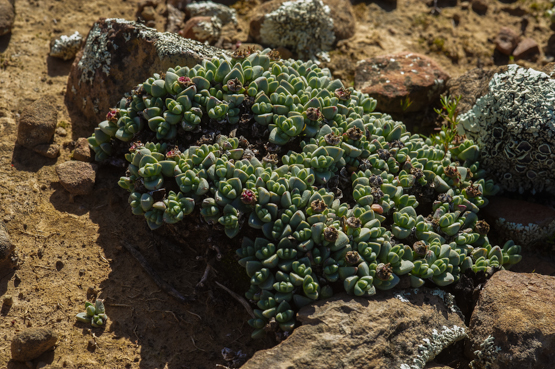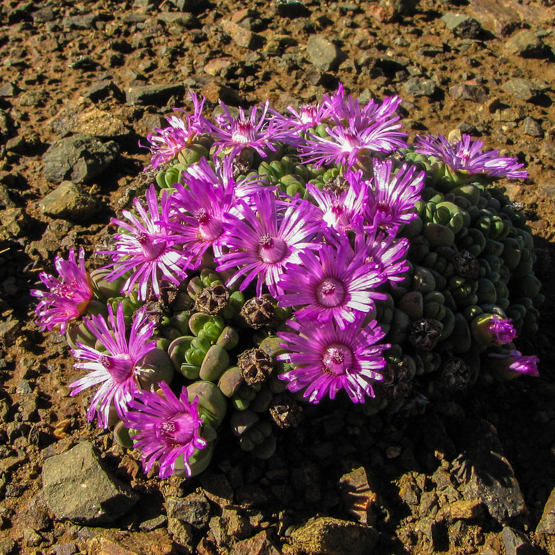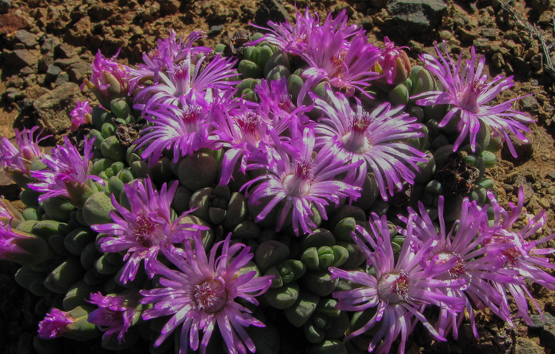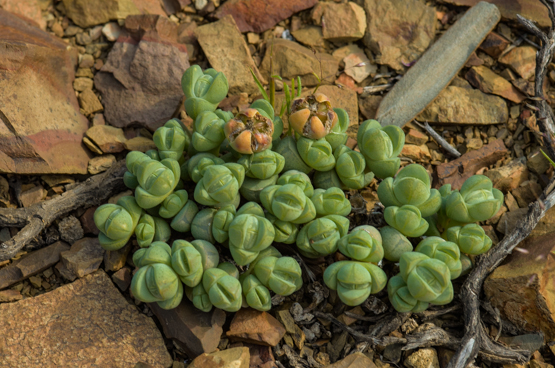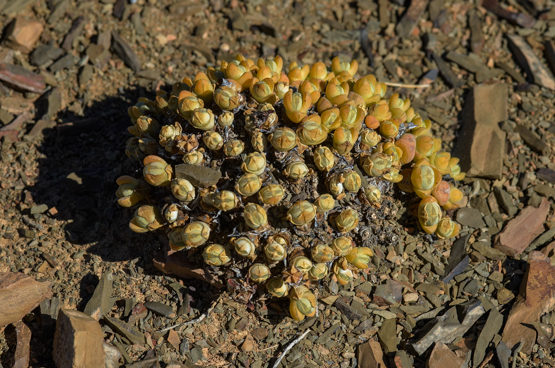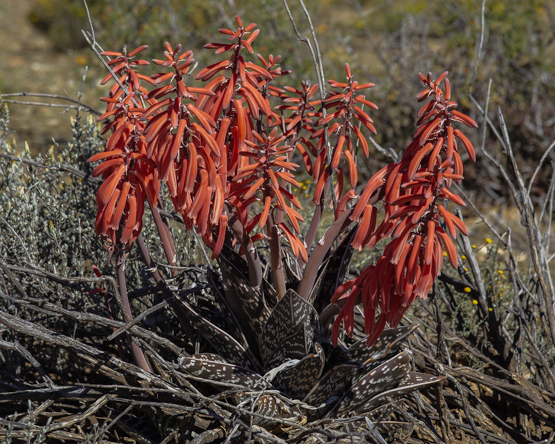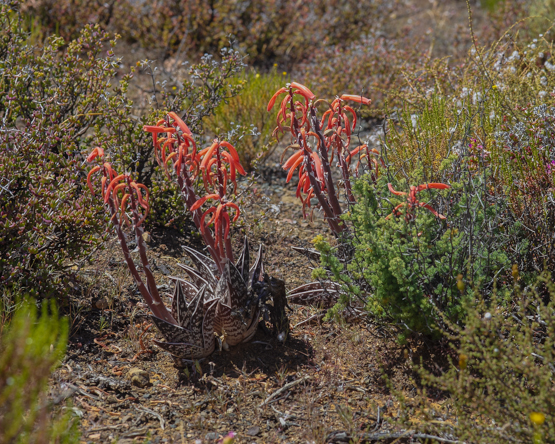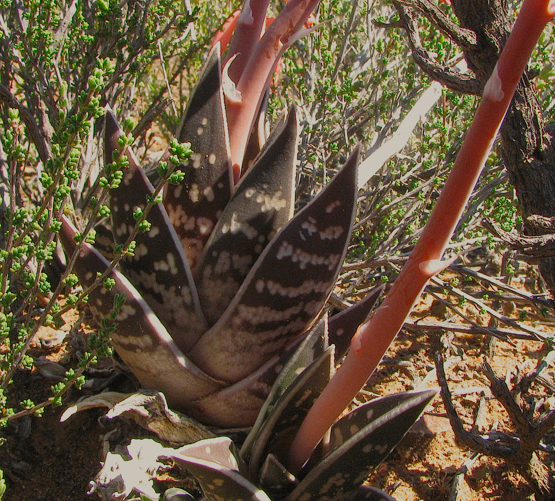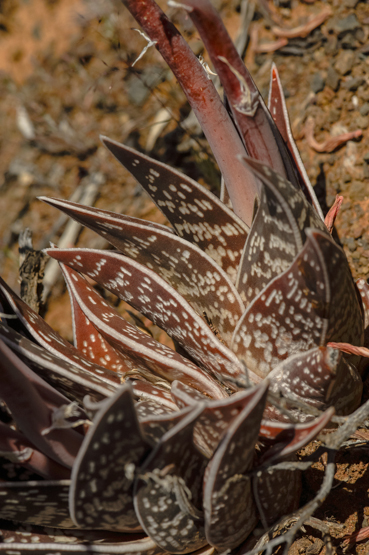Another of the tuberous Crassulas, widespread from the Richtersveld to the Eastern Cape, in rock crevices (saxifraga means stone breaker) and on stony slopes. The tubers may be up to 9 cm across.
The white to dark pink flowers are relatively big (up to 7.5 mm long) and occur from April to June. The leaves usually appear after flowering.
Month: January 2014
Antimima pumila
Although this species sometimes occurs in big colonies, it is nevertheless rather rare, as a result of the limited distribution area (along the border of the winter rainfall area, more or less in the Ceres-Sutherland-Laingsburg triangle). With leaves about a centimeter long, it really lives up to its name (pumila = dwarf).
The difference in appearance between plants in the resting and the growing period is so great that Louisa Bolus described the species twice within two years (as Ruschia pumila and R. levynsiae).
The pictures shown here will hopefully give you a good idea how much the plants change in a couple of months.
The first picture was made at the end of April (= Autumn) and the last one mid November (end of Spring). The flowering plants were photographed end of July-beginning of August.
Aloe variegata
This beautiful and distinctive plant was one of the first Aloes to be successfully cultivated in Europe.
The Afrikaans common name is Kanniedood (cannot die), which may explain why one sees it often planted on graves. It is widely distributed in the dry parts of southern Africa.
The plants prefer stony ground in partial shade (I have never seen a more healthy plant than the one my mother used to grow on her shaded windowsill – and that was in in Holland, not a country known for it abundant sunshine to start with).
Back on track; the joys of dealing with a monopoly
For the last 5 months my wife and I have been living in a rented house, waiting for the house we bought to be renovated. Mid November I requested the telephone company for a transfer of service. When I did not hear from them, I telephoned their dreaded 10210 number, where I was told -after waiting for half an hour for one of their consultants- that no, she could not find my request in the system. Only after some pressure she was prepared to “escalate” my request, so that I would not have to wait another 21 working days for a simple transfer. When I phoned beginning of this week to find out what the situation was, I was told -after endless waiting again- that I had been sent an SMS ten days earlier, saying the line would be reinstalled on the sixth of January. Needless to say that I had never received this SMS. Fortunately they resent it to me three times (sic), followed by a text message yesterday morning allowing me to reconfirm the appointment. About an hour after this I got a call on my cell phone from one of their technicians asking if he could come round to do the reconnecting?! Five minutes later he was on my doorstep and a couple of hours later I had a working landline and an internet connection again.
It seems that telephone services in South Africa are about the most expensive in the world. Telkom’s CEO told the press a short while ago that the clients hate the company.
One wonders why.
